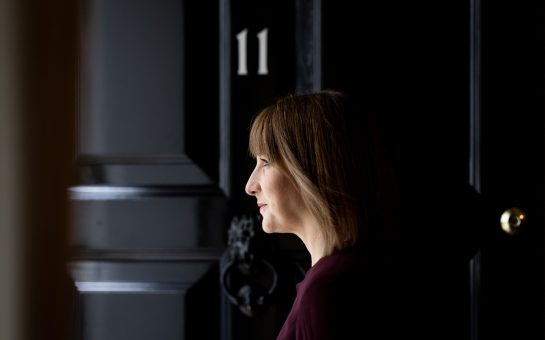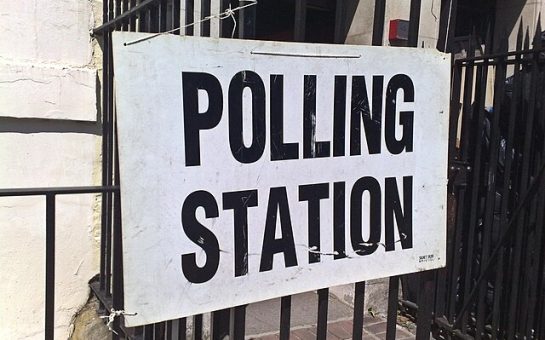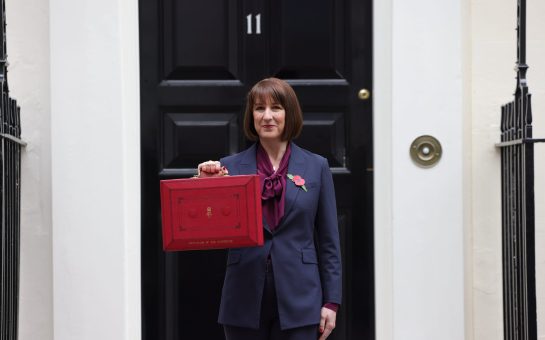Love her or loathe her, Theresa May’s Brexit deal gamble appears to have been scuppered after the Prime Minister promised to resign last night once the negotiation process is over.
She’s the latest in a long line of Conservative Prime Ministers to have been felled by Europe – think Thatcher, Major, Cameron in the past.
Only time will tell whether her role goes down in history as shambolic or stoic – indeed for all the criticism of May’s tenure, tributes have been flooding in since yesterday.
There’s still the Brexit procedure to see through, which could see May in office until… May. But a Conservative party leadership contest will also dominate headlines over the coming weeks.
So before there’s more political upheaval, here at MM we’ve compiled a look back at her time in power and we’ve delved even further back. Dancer she is not, but she’s got grace and style as you’ll also see…
Theresa May’s background (by Emily Brignall-Morley)
Theresa May was born October 1 1956 in Eastbourne, Sussex. Her father was a reverend who died in a car crash in 1981. Her mother died some months later in 1982, from multiple sclerosis. Her father kept his political leanings private, but her mother was a Conservative Party supporter.
Throughout May’s childhood, she attended both state and private schools, before studying geography at the University of Oxford, where she obtained a second class degree.
At an Oxford University Conservative Party dance, she met her future husband Philip May, whom she later married in 1984.
Just after graduating University in 1977, she worked for the Bank of England for six years, and remained in the finance industry for many years after this.
May served as a councillor for Durnsford ward on the London Borough of Merton from 1986 to 1994, where she was Chairman of Education, and Deputy Group Leader and Housing Spokesman.
In the 1992 general election May stood unsuccessfully for the safe Labour seat of North West Durham. May then stood at the 1994 Barking by-election, which was prompted by the death of Labour MP Jo Richardson, which May came third in.
Ahead of the 1997 general election, May was selected as the Conservative candidate for Maidenhead, a new seat which was created from parts of the seats of Windsor and Maidenhead and Wokingham.
She was elected with 25,344 votes (49.8%), almost double the total of second-placed Andrew Terence Ketteringham of the Liberal Democrats. This was where her career in Parliament truly began.
A life in politics (by Jordan Baker)
Between 1999-2010 May was a member of the Shadow Cabinet and entered as the Secretary of Education and Employment. The shadow cabinet hold the government accountable for their actions and responses and in theory act as an alternative government in waiting.
Between 2002-03 she became the first female chairman of the Conservative party and stated the party needed a new reputation after spending many years known as the “nasty party.” She was then also appointed Secretary of State for transport in 2003.
May also went on to be Shadow Secretary for the family in 2004 and later Shadow Secretary for Culture, Media and Sport.
When David Cameron took on the role as Conservative Party leader in 2005, he appointed May as the shadow leader of the House of Commons.
May also became shadow secretary for State for Work and Pensions in 2009.
In May 2010 she was re-elected as MP for Maidenhead, winning 60% of the vote. She also became the longest-serving Conservative Home Secretary for over a century when she was granted the position of Home Secretary and Minister for Women and Equality by the then Prime Minister Cameron.
During this time she oversaw reductions in crime, reform of the police, and the introduction of the Modern Slavery Act.
June 2016 then saw May announce herself as candidate to be the next Conservative Party Leader after the immediate resignation of David Cameron following the EU referendum in which she was successful.
Voting record (by Harry Benbow)
As said above, May had a long and varied career before stepping up as Prime Minister, but with this comes a chequered voting history that she might not be so proud of now.
Her record on gay rights is certainly mixed, being absent for votes on repealing Section 28 in the early 00s and in 1998 she voted against lowering the age of consent for homosexual acts from 18 to 16.
Her stance on gay rights has softened over the years, recently voting in favour of same sex marriages, but the damage these early votes would have inflicted on past generations will still be felt.
Alongside this, she consistently voted for the Iraq War, but also the investigations into it afterwards. Her stance on immigration is clear, with consistent votes for a stricter asylum system and stronger enforcement of immigration laws.
She shows the same consistency on surveillance, voting six times for mass retention of information about communications and three times for mass surveillance of people’s communications and activities.
Backwards views and support for regrettable wars hasn’t affected her rise in politics, even deflecting the Windrush scandal onto Amber Rudd despite her significant contribution to it as Home Secretary from 2010 to 2016.
How it went wrong for Theresa May (by Matthew D’Henin)
Off the back of two failed votes on her Brexit deal – in which she suffered the worst ever defeat in Commons history – Theresa May’s eventual demise has been confirmed.
After her second defeat, May’s bamboozling address from behind her all-too-familiar oak podium summed the former Prime Minister up – a commendably determined politician who was, above all, too determined to implement the 2016 referendum without even considering a compromise to her widely disapproved-of deal.
“So far, parliament has done everything possible to avoid making a choice,” she said in her speech on March 20.
“Motion after motion and amendment after amendment have been tabled without Parliament ever deciding what it wants. All MPs have been willing to say is what they do not want.”
Yet as Theresa May shoved the blame onto her parliamentary colleagues – the same colleagues she needed to up vote her deal thereafter – it was clear the Prime Minister was struggling for a plan B.
Instead she appeared before the world media yet again hell bent on promoting her deal as the only viable option.
Negotiating a sub-standard deal is one thing, but pushing it beyond the realms of acceptance is another. May’s deal united both remainers and brexiteers with uncertainties over the Irish backstop, where Britain would have to succumb back into the customs union if a ‘hard border’ was ever required between Northern Ireland and the Republic of Ireland.
The possibility of a ‘frozen Brexit’ – where Britain had to remain locked in a customs union – was never a possibility amongst MPs, yet Mrs May continued to push her deal.
After a 16-month negotiating period and a customary settlement of around £40billion being sent to the EU, all May had to show for her governments efforts were two successive Commons defeats. Ouch.
But don’t let her tenure be defined by Brexit shortfalls, this was a politician who never endeared herself to the public in a role she was selected for, not elected, making the task even more vital.
In 2017, she assured a nurse that there was no ‘magic money tree’ during her election campaign, just a week before losing her majority and conjuring up £10million to the DUP.
Be it winning an election she actually lost, to robotically ruining one of the nation’s best loved Abba tracks, this was a Prime Minister who admirably hung on to the hat in an attempt to be on history teacher’s tongues for years to come.
It’s true now that she still will be, but not for the reasons she would’ve wished.
Theresa May’s most iconic looks (by Anna Brocklehurst)
“Her most important work is single-handedly revolutionising the way female politicians look.”
As Theresa May entered Downing Street in 2016 she was predicted to bring a new era of high fashion, but has she lived up to this?
Political fashion blogger Laura Dunn believes “the way Theresa May dresses indicates her strength as a leader and how she is not afraid to take a risk, both politically and with her clothes. She has the confidence to carry off bold choices.”
Here are her most iconic looks to date.
In 1996 for her first Vogue appearance she chose an understated pink pastel suit.
In March 2010, two months before she was appointed home secretary, she was pictured in red knee boots and a chunky necklace showing her more “casual” fashion sense.
In July 2016, as she started her campaign to become Prime Minister in Birmingham she chose a navy suit, paired with her signature pair of leopard print pumps.
Research has shown that in her first six months as Prime Minister she wore navy to 44% of her public appearances, despite her stating that her favourite colour is in fact red.
Her next most popular choice was black with her wearing that 10% of the time and we can’t forget her signature leopard print kitten heels.
Main image courtesy of BBC via YouTube, with thanks.



